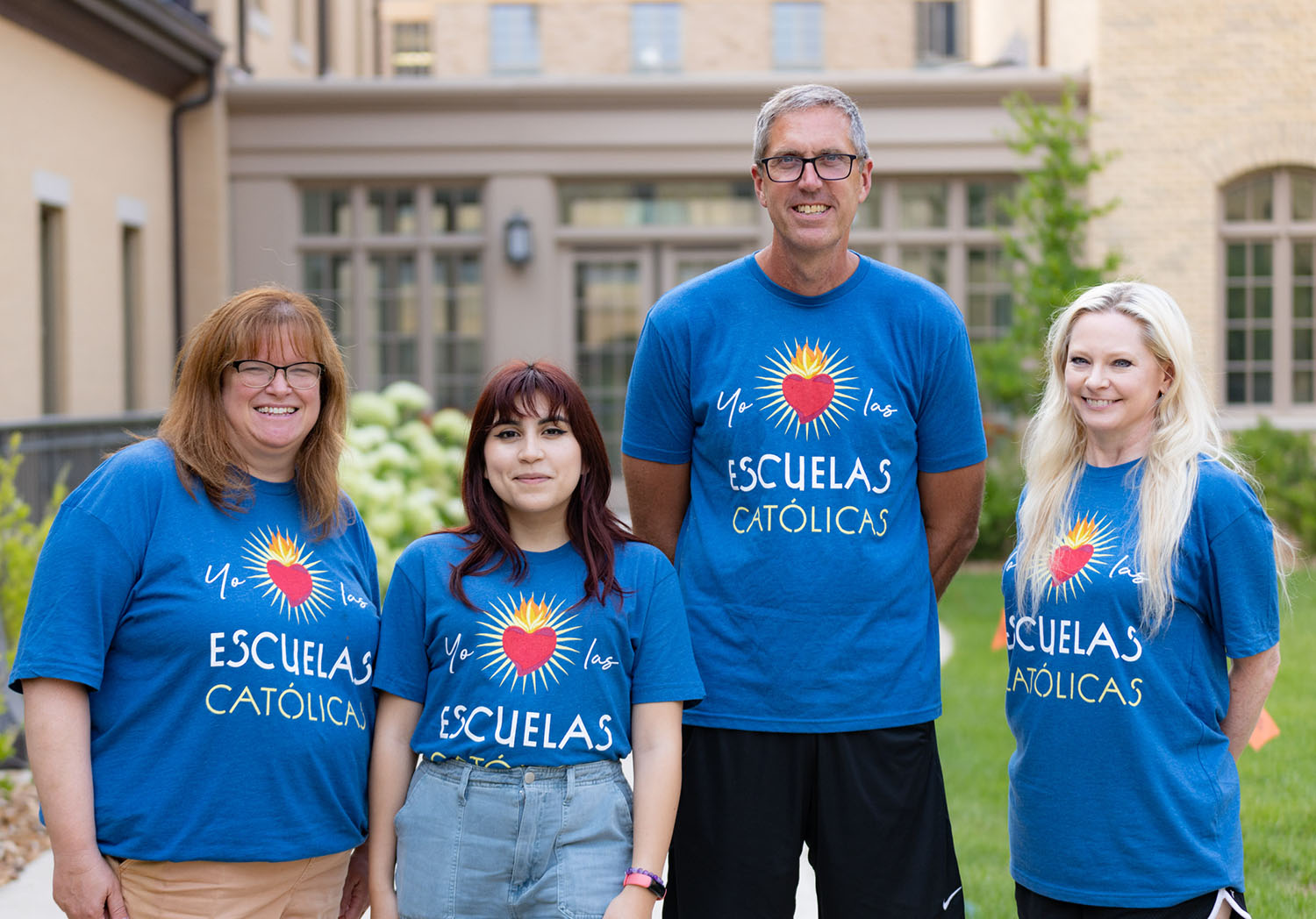Great article by the University of Notre Dame’s Alliance for Catholic Education (ACE) program featuring St. Veronica Catholic School!
On 6th Street in North Philadelphia, just across the border from New Jersey, St. Veronica Catholic School is tucked quietly in the middle of a residential block. At first glance, you might not even realize that the school is open. But enter the building, and you will see that it is filled with students and the lively activity that characterizes a vibrant community.
“I learned how to embrace Latino culture in a whole different way and make it part of our everyday culture, not just our events.”
– Diane Muller, Principal
“If you drive by the front of the school—which is really the back—it looks closed, but we’re only 25 kids from full capacity,” says Principal Diane Muller. “Our students come from all over the city, and the majority actually don’t live in our neighborhood. We even have kids from outside of Philadelphia coming to our school from New Jersey and Bucks County, which is a 40-minute drive from here.”
While the student population is geographically diverse, roughly 94 percent of students at St. Veronica are Latino, and the community is tightly knit. “Our Latino families value school, they value faith and education,” says Muller. “Our families all find out about us through word of mouth. We have many families whose parents or grandparents came here and we have cousins of cousins of cousins.”

Although St. Veronica has strong enrollment and serves mostly Latino families, Muller still leapt at the opportunity to participate in ACE’s Latino Enrollment Institute (LEI) during the 2022–23 school year. St. Veronica is a member of the Independence Mission Schools (IMS) Network, and Deputy Chief of Schools Benny Morten invited Muller to join the LEI on behalf of St. Veronica.
“The LEI was an eye-opening experience,” says Muller. As a result of what she learned through LEI, the St. Veronica community has incorporated celebrations for the Feast of Our Lady of Guadalupe and Las Posadas into the school calendar. However, this was only the tip of the iceberg for Muller and her staff.
“I learned how to embrace Latino culture in a whole different way and make it part of our everyday culture, not just our events,” says Muller.
One of the steps that Muller took was to implement the ACE Madrinas Model, an outreach program that empowers Latino families to become ambassadors for a Catholic school. “We call it a ‘madrina/padrino program’ because we have a lot of fathers who are also helping,” Muller explains.
Still, Muller and her staff realized that they needed more. “As we were digging into our events and parent involvement, we kept coming back to the thought that we still weren’t serving our kids in the ways that they needed to be served,” says Muller.
Muller had heard of the ENL Hernandez Fellows Program during her year in LEI, and she decided that it was an important next step not only for her but for her staff and, most importantly, their students. “We had ESL services through Catapult, but the pull-out instruction wasn’t enough because one person can’t take over 170 kids,” says Muller.
“We’ve seen that our work in ENL Hernandez Fellows is a celebration of what teachers already do … Hernandez Fellows has given us a name for the strategies and a way to track our work and be purposeful about it.”
– Diane Muller, Principal
“I drafted a proposal for three members of our staff to participate in Hernandez Fellows, for our whole team to complete the ENL online modules, and to hire a current teacher to help coach our teachers as we go through this process together,” Muller explains of the “sky’s-the-limit” approach she took to moving forward. “I presented it to IMS Chief of Schools Jill Valunas, and we got approval for everything.
Muller, along with two teachers, is currently participating in ENL Hernandez Fellows Cohort 18. They have already begun to put into practice strategies that they’re learning in their ENL coursework, including giving home language surveys and doing home visits. “We’ve learned that about 76 percent of our students speak a language other than English as their primary language and for most of our students, their primary language is Spanish,” says Muller.

“Now, we have everything at our school labeled in Spanish and English, we’re using cognate charts in our classrooms, and we’ve started interviewing students after lessons to assess their learning,” says Muller. “Our ESL coordinator created a home language demographics spreadsheet to track the home language survey data and it has turned into a decision-making tool for us.”
One of the biggest wins that Muller and her team are experiencing is that, while they’re making changes, they’re not completely overhauling what they do. “We’ve seen that our work in ENL Hernandez Fellows is a celebration of what teachers already do,” says Muller. “We were doing some of these things, but Hernandez Fellows has given us a name for the strategies and a way to track our work and be purposeful about it.”
With all of this good work in motion, where does the community at St. Veronica go from here? “Next, we’re working on distinguishing between language needs and learning differences,” says Muller. “We noticed a pattern of students who struggled to read in lower elementary making great progress by the time they reached middle school, and now we realize that part of the challenge was that they were also learning English. By the time they reached 5th or 6th grade, they were able to express language differently.”
With each step forward, Muller continues to dream big for the sake of her students and teachers. “I would love to get to a point over the next couple of years where all of our teachers have gone through the ENL Hernandez Fellows Program,” says Muller.
